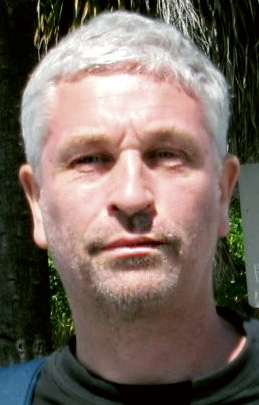/ Recently Commented
Technology Vendors Must Be Proactive in Dealing With COVID-19 Problems
 Early action now on possible performance issues will "flatten the curve" of customer problems in the coming weeks and months. Here are three things technology and software vendors can do right now to get ahead of problems that may appear (if they are not already) with services such as development, implementation and support... Check your contracts to see whether there are any "material assumptions" that have failed or will fail - perhaps because of some governmental action or unavailability of personnel... more
Early action now on possible performance issues will "flatten the curve" of customer problems in the coming weeks and months. Here are three things technology and software vendors can do right now to get ahead of problems that may appear (if they are not already) with services such as development, implementation and support... Check your contracts to see whether there are any "material assumptions" that have failed or will fail - perhaps because of some governmental action or unavailability of personnel... more
- Evan D. Brown
- Comments: 1
- Views: 5,295
A New Busy Hour – One of the Many Consequences of the COVID-19 Pandemic
 One of the many consequences of the coronavirus is that networks are going to see a shift in busy hour traffic. Busy hour traffic is just what it sounds like -- it's the time of the day when a network is busiest, and network engineers design networks to accommodate the expected peak amount of bandwidth usage. Verizon reported on March 18 that in the week since people started moving to work from home that they've seen a 20% overall increase in broadband traffic. more
One of the many consequences of the coronavirus is that networks are going to see a shift in busy hour traffic. Busy hour traffic is just what it sounds like -- it's the time of the day when a network is busiest, and network engineers design networks to accommodate the expected peak amount of bandwidth usage. Verizon reported on March 18 that in the week since people started moving to work from home that they've seen a 20% overall increase in broadband traffic. more
- Doug Dawson
- Comments: 2
- Views: 5,877
The Sad Story of Private Public Interest Commitments (PICs)
 The voluntary Public Interest Commitments (PIC) have a long and sad history at ICANN. They were a process never created or evaluated by the Multistakeholder process, thrown together for one purpose and allowed to morph into a mechanism for an almost unlimited number of un-reviewed other purposes. Disputes are delegated to a resolution process which itself was never evaluated for... more
The voluntary Public Interest Commitments (PIC) have a long and sad history at ICANN. They were a process never created or evaluated by the Multistakeholder process, thrown together for one purpose and allowed to morph into a mechanism for an almost unlimited number of un-reviewed other purposes. Disputes are delegated to a resolution process which itself was never evaluated for... more
- Kathy Kleiman
- Comments: 1
- Views: 15,005
The Legal Enforceability of PIR’s Public Interest Commitment
 Since Ethos announced its investment in PIR last fall, Ethos has welcomed the opportunity to engage with .ORG registrants and users to hear their ideas and answer their questions. We listened to concerns expressed in the community, and we worked to address them. We announced a number of voluntary commitments that Ethos is prepared to make, and then we listened to feedback from the community on the scope of those commitments, as well as on the enforceability of those commitments. more
Since Ethos announced its investment in PIR last fall, Ethos has welcomed the opportunity to engage with .ORG registrants and users to hear their ideas and answer their questions. We listened to concerns expressed in the community, and we worked to address them. We announced a number of voluntary commitments that Ethos is prepared to make, and then we listened to feedback from the community on the scope of those commitments, as well as on the enforceability of those commitments. more
- Allen Grogan
- Comments: 1
- Views: 5,610
Consistency, Urgency, and Transparency Needed for Registrant Data Requests
 As we reported in our Post-GDPR Compliance Rate retrospective in January 2020, registrar compliance rates in response to verified requests for redacted registrant information using the Appdetex WHOIS Requestor System was 25 percent. Our most recent report shows the compliance rate has increased to 27 percent, based upon a total of 243 requests for redacted WHOIS information sent to 68 registrars over the period starting January 1, 2020, through February 24, 2020. more
As we reported in our Post-GDPR Compliance Rate retrospective in January 2020, registrar compliance rates in response to verified requests for redacted registrant information using the Appdetex WHOIS Requestor System was 25 percent. Our most recent report shows the compliance rate has increased to 27 percent, based upon a total of 243 requests for redacted WHOIS information sent to 68 registrars over the period starting January 1, 2020, through February 24, 2020. more
- Frederick Felman
- Comments: 7
- Views: 8,849
Firefox Starts the Roll Out of DNS Over HTTPS (DoH) by Default for US-Based Users
According to the company, the rollout will continue over the next few weeks to confirm that no major issues are discovered as this new protocol is enabled. more
- CircleID Reporter
- Comments: 1
- Views: 52,452
Accountability Initiatives to Secure a Strong Future for .ORG
 Last fall, when we put forth our bid to acquire the Public Interest Registry (PIR), our announcement - made jointly with PIR and its parent, the Internet Society - was met with questions. We took them seriously and made a conscious effort to engage with representative members of the .ORG community to deepen our understanding. We found that a consistent message was that the commitments made by Ethos since this fall addressed most of the community's issues, but there was a question as to whether they were enforceable and if so, how? more
Last fall, when we put forth our bid to acquire the Public Interest Registry (PIR), our announcement - made jointly with PIR and its parent, the Internet Society - was met with questions. We took them seriously and made a conscious effort to engage with representative members of the .ORG community to deepen our understanding. We found that a consistent message was that the commitments made by Ethos since this fall addressed most of the community's issues, but there was a question as to whether they were enforceable and if so, how? more
- Erik Brooks
- Comments: 1
- Views: 6,181
Why Are the U.S. Broadband Prices So High?
 I've wondered for years about why broadband prices are higher in the U.S. than the rest of the world. The average price in other industrial counties is significantly lower. In France, broadband averages $31, Germany is $35, Japan is $35, South Korea is $33, and the U.K. is $35. The average price of broadband in the U.S. is approaching $70, so we're at twice the price as other countries. more
I've wondered for years about why broadband prices are higher in the U.S. than the rest of the world. The average price in other industrial counties is significantly lower. In France, broadband averages $31, Germany is $35, Japan is $35, South Korea is $33, and the U.K. is $35. The average price of broadband in the U.S. is approaching $70, so we're at twice the price as other countries. more
- Doug Dawson
- Comments: 1
- Views: 7,985
Digging Into IPv6 Traffic to Google: Is 28% Deployment Really the Limit?
 After some years of accelerating IPv6 deployment, we are now into a period of slower growth and it's not clear where we are heading. It is therefore interesting to try to predict the future of IPv6 over the coming years. At Ericsson Research, we have been working on this topic since 2013, but just recently created a forecast model that seems to be quite accurate. However, it gives a disappointing message of a very low final level of IPv6 deployment at less than 30%! more
After some years of accelerating IPv6 deployment, we are now into a period of slower growth and it's not clear where we are heading. It is therefore interesting to try to predict the future of IPv6 over the coming years. At Ericsson Research, we have been working on this topic since 2013, but just recently created a forecast model that seems to be quite accurate. However, it gives a disappointing message of a very low final level of IPv6 deployment at less than 30%! more
- Christofer Flinta
- Comments: 12
- Views: 31,665
There Is No Artificial Intelligence
 It seems like most new technology today comes with a lot of hype. Just a few years ago, the press was full of predictions that we'd be awash with Internet of Thing sensors that would transform the way we live. We've heard similar claims for technologies like virtual reality, blockchain, and self-driving cars. I've written a lot about the massive hype surrounding 5G -- in my way of measuring things, there isn't any 5G in the world yet, but the cellular carriers are loudly proclaiming its everywhere. more
It seems like most new technology today comes with a lot of hype. Just a few years ago, the press was full of predictions that we'd be awash with Internet of Thing sensors that would transform the way we live. We've heard similar claims for technologies like virtual reality, blockchain, and self-driving cars. I've written a lot about the massive hype surrounding 5G -- in my way of measuring things, there isn't any 5G in the world yet, but the cellular carriers are loudly proclaiming its everywhere. more
- Doug Dawson
- Comments: 1
- Views: 12,294
ISOC and the PIR Sale: Lessons Being Learned
 The PIR/.ORG transaction is a watershed moment for ISOC. What had once seemed (at least to ISOC and its Board) to be ISOC's chance to transform its finances now seems to many to be a threat to ISOC's essence, and even its very existence. From the ISOC-NY perspective, this entire affair points out the paucity of community-involved multistakeholder participation in ISOC's critical decision-making processes (and other processes, too). more
The PIR/.ORG transaction is a watershed moment for ISOC. What had once seemed (at least to ISOC and its Board) to be ISOC's chance to transform its finances now seems to many to be a threat to ISOC's essence, and even its very existence. From the ISOC-NY perspective, this entire affair points out the paucity of community-involved multistakeholder participation in ISOC's critical decision-making processes (and other processes, too). more
- Greg Shatan
- Comments: 2
- Views: 6,691
WTSA-2020: Reflecting on a Contemporary ITU-T Role
 Every four years – as it has done for nearly a hundred years – the ITU-T as the world's only global intergovernmental standards body for all telecommunication, invites its 196 sovereign state members to a meeting where they examine their work and set the stage for the next four years. There is no treaty prepared, but they do examine major developments and decide needed standardization work, priorities and structure of the organization itself – including their leadership. more
Every four years – as it has done for nearly a hundred years – the ITU-T as the world's only global intergovernmental standards body for all telecommunication, invites its 196 sovereign state members to a meeting where they examine their work and set the stage for the next four years. There is no treaty prepared, but they do examine major developments and decide needed standardization work, priorities and structure of the organization itself – including their leadership. more
- Anthony Rutkowski
- Comments: 1
- Views: 9,606
Truth in Web Digital Identity?
 Most of us, when we go to a website and see the little lock at the top of the browser, don't think twice and trust that we are communicating with the right company or organization. However, this is no longer the case because of a rather radical development that has largely occurred without notice or intervention by almost everyone. The web now has its own rapidly spreading version of CallerID spoofing that is about to get worse. more
Most of us, when we go to a website and see the little lock at the top of the browser, don't think twice and trust that we are communicating with the right company or organization. However, this is no longer the case because of a rather radical development that has largely occurred without notice or intervention by almost everyone. The web now has its own rapidly spreading version of CallerID spoofing that is about to get worse. more
- Anthony Rutkowski
- Comments: 8
- Views: 11,825
Can 5G Replace WiFi?
 Verizon recently posted a webcast with investors where Ronan Dunne, EVP and CEO of the Verizon Consumer Group said that he believed that 5G hotspots using millimeter wave spectrum would eventually displace WiFi in homes. He cites major benefits of 5G over WiFi. He believes that a 5G network will be more reliable and more secure. He thinks that people will value the safety that comes from having traffic inside their home being encrypted... more
Verizon recently posted a webcast with investors where Ronan Dunne, EVP and CEO of the Verizon Consumer Group said that he believed that 5G hotspots using millimeter wave spectrum would eventually displace WiFi in homes. He cites major benefits of 5G over WiFi. He believes that a 5G network will be more reliable and more secure. He thinks that people will value the safety that comes from having traffic inside their home being encrypted... more
- Doug Dawson
- Comments: 1
- Views: 9,442
Stop Propagating False Information About the .ORG Transaction
 We were disappointed to see The Pittsburgh Post-Gazette publish a recent editorial on February 13 about the sale of Public Interest Registry (PIR, the company that operates .ORG) that propagates false information about the transaction, including runaway prices, censorship and lack of experience. Runaway prices? Ethos Capital and PIR have committed to capping price increases to no more than ten percent per year on average. more
We were disappointed to see The Pittsburgh Post-Gazette publish a recent editorial on February 13 about the sale of Public Interest Registry (PIR, the company that operates .ORG) that propagates false information about the transaction, including runaway prices, censorship and lack of experience. Runaway prices? Ethos Capital and PIR have committed to capping price increases to no more than ten percent per year on average. more
- Nora Abusitta-Ouri
- Comments: 4
- Views: 6,460